
Sun Apr 06 - Written by: Denis Maina
13 Things Every Renter Needs on Their Apartment Checklist
Moving to a new apartment can feel overwhelming – especially when you're trying to figure out what you need. Whether you're a first-time renter or a seasoned pro, having the right checklist makes all the difference between a smooth move-in and a chaotic one.
Understanding Your Rental Budget and Financial Requirements
Before signing your lease, you’ll need to understand all the financial obligations that come with renting an apartment. Let’s break down the essential costs you should prepare for.
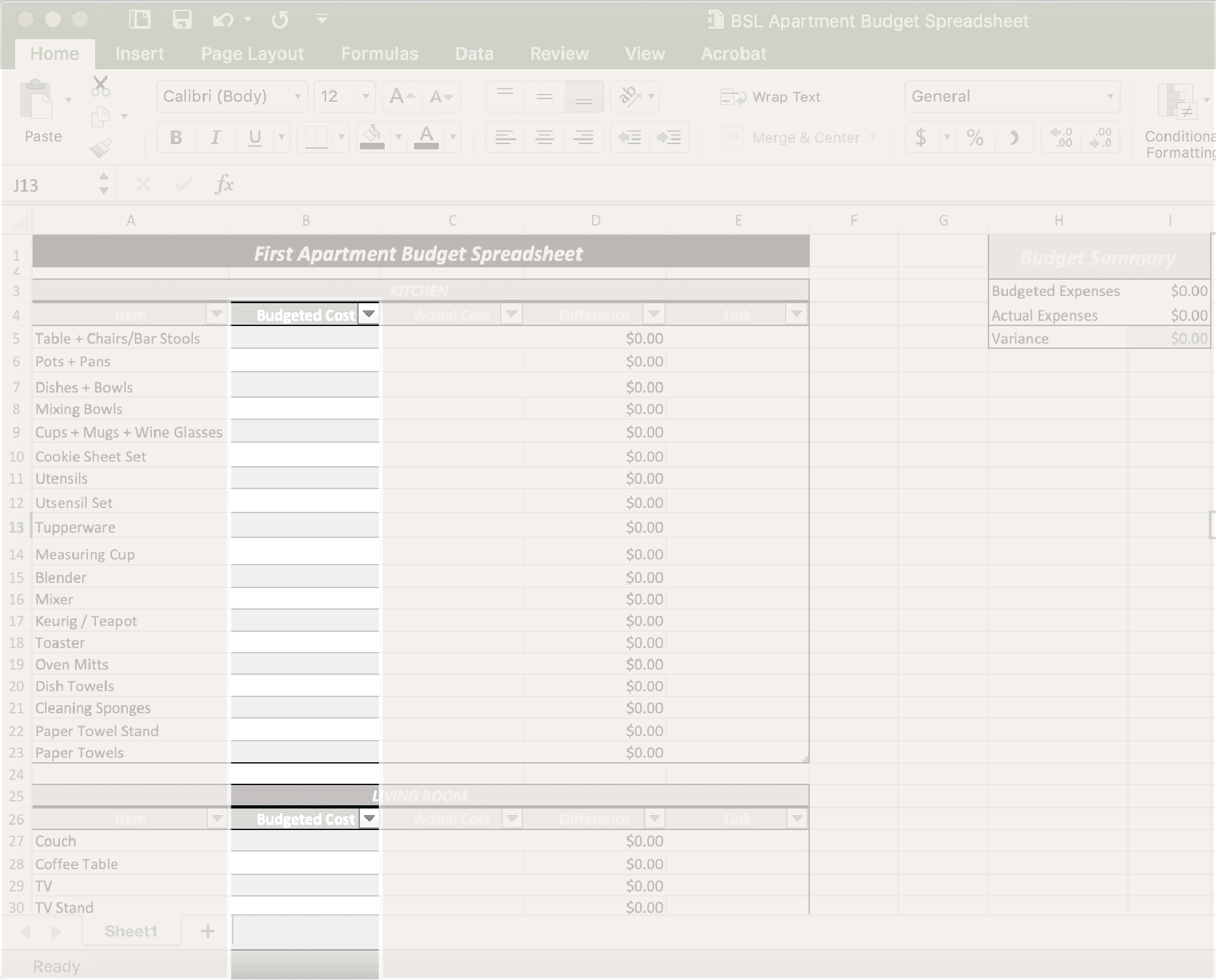 A detailed apartment budget worksheet helps track income, expenses, and savings for first-time renters. Source: By Sophia Lee
A detailed apartment budget worksheet helps track income, expenses, and savings for first-time renters. Source: By Sophia Lee
Monthly Rent and Security Deposit
Your monthly rent will likely be your biggest expense, so make sure it doesn’t exceed 30% of your monthly income. Most landlords require the first month’s rent plus a security deposit equal to one or two months’ rent before you move in. Keep in mind that some properties might also charge additional fees like pet deposits ($200-500) or parking fees ($50-150 monthly). Always get these amounts in writing and understand exactly when each payment is due.
Utility Cost Estimates
Don’t forget to factor in monthly utilities when budgeting for your new place. Standard utilities include electricity ($30-150), gas ($30-80), water ($20-70), internet ($40-100) and trash service ($20-50). Ask your landlord which utilities are included in the rent and contact local utility companies for average costs in your area. Pro tip: Request previous utility bills from the landlord to get a realistic estimate of what you’ll pay.
Renter’s Insurance Options
Protecting your belongings with renter’s insurance is surprisingly affordable, typically costing between $15-30 per month. Most policies cover theft damage from fire or water issues and liability protection in case someone gets injured in your apartment. Some landlords require proof of renter’s insurance before you can move in, so shop around for quotes from different providers. Look for policies that offer at least $30,000 in personal property coverage and $100,000 in liability protection.
Evaluating the Apartment’s Basic Infrastructure
Before signing a lease check these essential systems to avoid costly surprises and ensure your comfort in your new home.
 A proper electrical inspection includes testing all outlets for functionality and safety issues. Source: Avalon Home Inspections
A proper electrical inspection includes testing all outlets for functionality and safety issues. Source: Avalon Home Inspections
Plumbing and Water Pressure
Test every faucet and flush all toilets during your apartment walkthrough. Turn on multiple water sources at once to check the water pressure stays consistent. Look under sinks for signs of water damage leaks or mold. Check that hot water arrives quickly and maintains temperature in all bathrooms and the kitchen. Don’t forget to inspect visible pipes for rust corrosion or dripping. Ask the landlord about the building’s pipe material and when the last plumbing inspection occurred.
Electrical Systems and Outlets
Count the number of outlets in each room and verify they’re all working with a phone charger. Look for GFCI outlets in bathrooms and kitchen areas – they’re essential for safety. Check that light switches work properly and don’t make buzzing sounds. Test built-in appliances like dishwashers microwaves and refrigerators to ensure they run properly. Ask about the age of electrical wiring and when the last inspection was completed. Note any exposed wiring or scorched outlets as these are serious red flags.
Heating and Cooling Systems
Test both heating and air conditioning systems regardless of the season you’re viewing the apartment. Listen for unusual noises when the systems kick on. Check for even temperature distribution throughout all rooms. Inspect air vents for dust buildup or mold. Ask about the HVAC system’s age and maintenance schedule. Find out if you’ll control your own thermostat or if it’s centrally managed. Request copies of recent energy bills to estimate your costs.
Checking Safety and Security Features
Your safety should be a top priority when choosing a new apartment. Before signing the lease check these crucial security elements to ensure your new home is safe and secure.
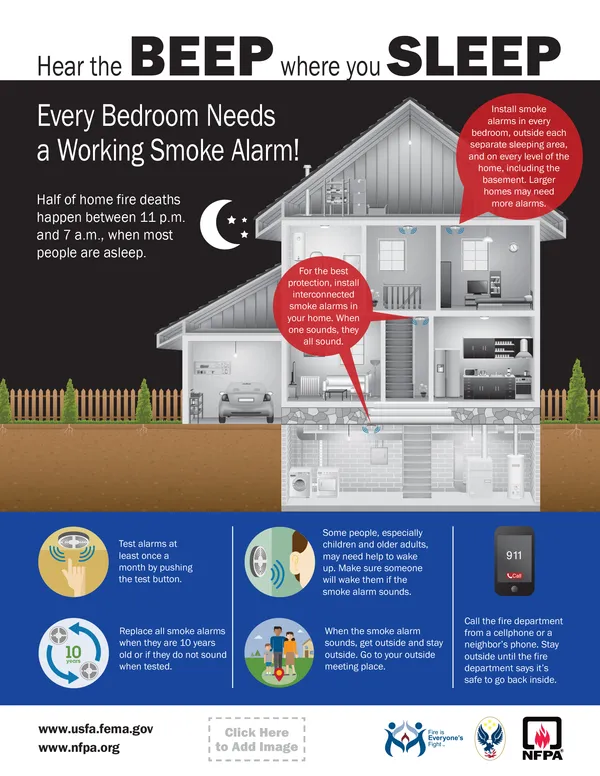 Proper smoke alarm installation and maintenance is essential for apartment safety. Source: USFA.FEMA.gov
Proper smoke alarm installation and maintenance is essential for apartment safety. Source: USFA.FEMA.gov
Door and Window Locks
Start by testing every lock on exterior doors including deadbolts and chain locks. Check that all windows have working locks and open smoothly without sticking. Pay special attention to ground-floor windows and sliding doors which are common entry points. Ask your landlord about the last time locks were changed and if all keys have been returned from previous tenants. Don’t forget to inspect the main building entrance security if you’re in a multi-unit complex including intercoms buzzers and security cameras.
Smoke Detectors and Carbon Monoxide Alarms
Test all smoke detectors and carbon monoxide alarms in the unit to confirm they’re working properly. Most states require functioning smoke detectors in bedrooms hallways and common areas. Ask about the age of the devices since they typically need replacement every 10 years for smoke detectors and 5-7 years for carbon monoxide alarms. Confirm who’s responsible for battery replacement and maintenance – this should be clearly stated in your lease. Make sure CO detectors are installed near sleeping areas and on every level of your apartment.
Emergency Exits and Fire Escapes
Locate and inspect all emergency exits in your apartment and building. Fire escapes should be sturdy well-maintained and easily accessible from your unit. Check that emergency exit signs are clearly visible and properly lit. Ensure hallways and stairwells are well-lit and free from obstacles. Ask about the building’s evacuation plan and identify at least two ways to exit from your apartment. Verify that fire extinguishers are present in required locations and haven’t expired.
Inspecting Room-Specific Elements
Each room in your potential apartment needs careful inspection to ensure it meets your daily living needs and functions properly.
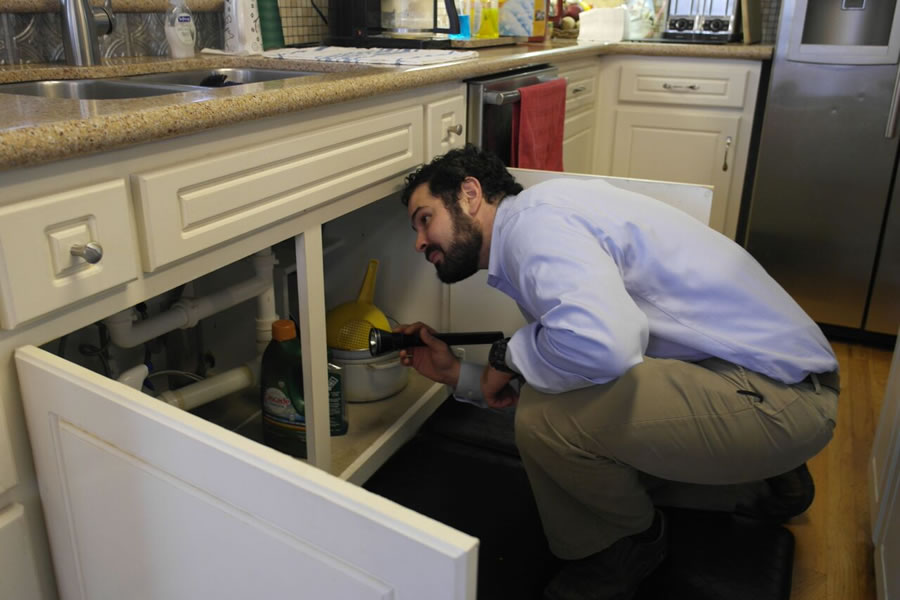 A thorough kitchen inspection includes checking appliances, cabinets, countertops, and plumbing fixtures. Source: Atlanta Property Inspections
A thorough kitchen inspection includes checking appliances, cabinets, countertops, and plumbing fixtures. Source: Atlanta Property Inspections
Kitchen Appliances and Cabinet Space
Start by testing all kitchen appliances including the refrigerator stove oven dishwasher and microwave. Open and close cabinet doors to check for smooth operation and look for signs of water damage or pest problems. Check if the fridge maintains proper temperature and if the freezer shows signs of frost buildup. Measure cabinet space to ensure your cookware and dishes will fit comfortably. Don’t forget to inspect under-sink plumbing for leaks and verify the garbage disposal works. Test all electrical outlets and ensure there’s adequate lighting above cooking areas.
Bathroom Fixtures and Ventilation
Turn on all faucets to check water pressure and wait for hot water to confirm proper heating. Flush toilets to verify strong water flow and watch for any leaks around the base. Test the shower head and bathtub drain to ensure proper drainage with no backups.
 Proper bathroom ventilation prevents moisture buildup and mold growth in your apartment. Source: Badeloft
Proper bathroom ventilation prevents moisture buildup and mold growth in your apartment. Source: Badeloft
Look for a working exhaust fan or window to prevent moisture buildup and mold growth. Check the condition of caulking around the tub shower and sink. Inspect the medicine cabinet and under-sink storage for water damage or warping.
Bedroom Storage Solutions
Measure closet dimensions to ensure your clothes and belongings will fit properly. Check closet doors slide or swing smoothly and verify all closet rods are sturdy. Look for additional storage options like built-in shelves or overhead spaces.
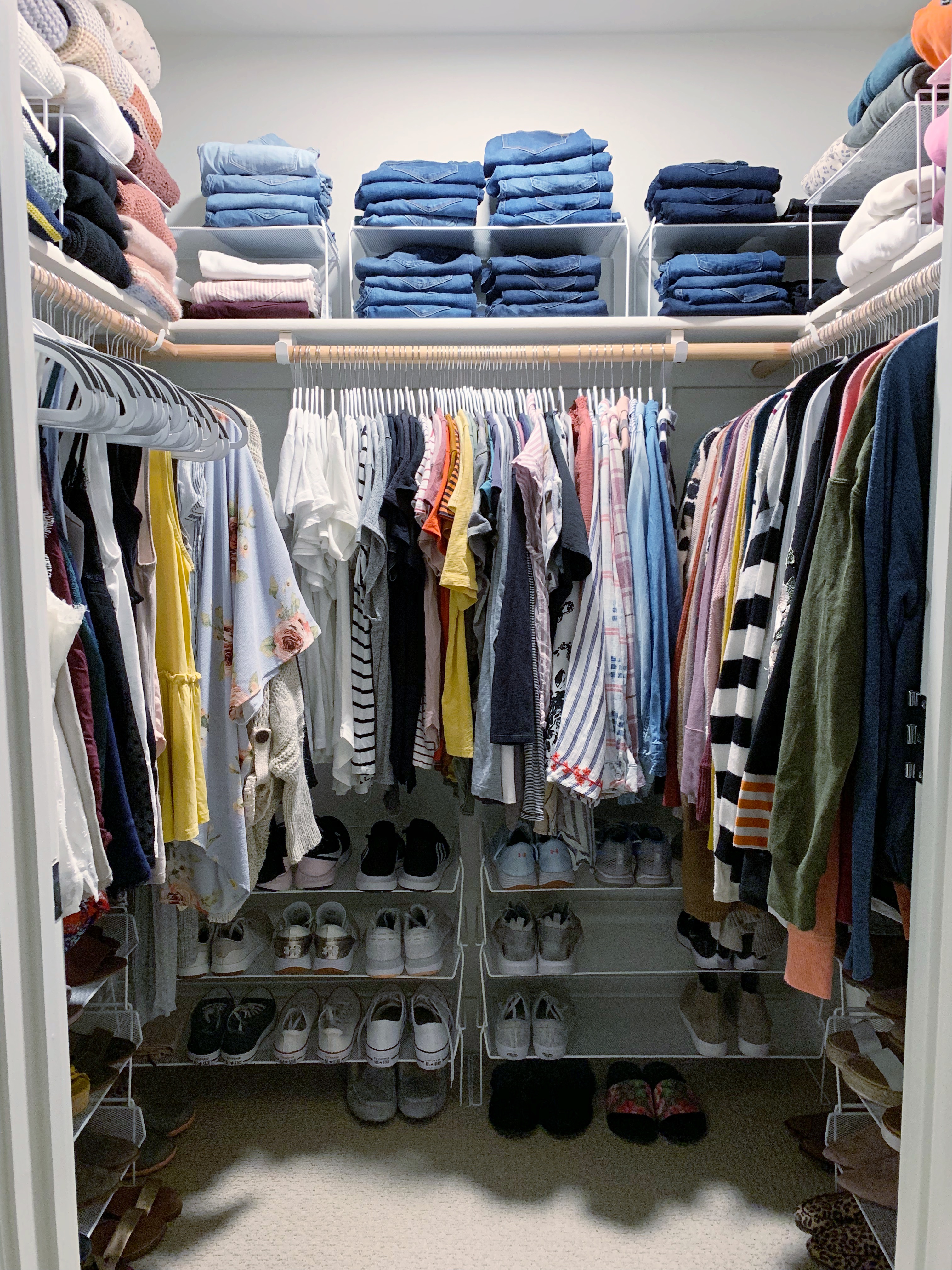 Smart storage solutions like hanging organizers can maximize space in small apartment closets. Source: Simply Organized
Smart storage solutions like hanging organizers can maximize space in small apartment closets. Source: Simply Organized
Test all electrical outlets since you’ll likely need them for phone charging and electronics. Examine window treatments to ensure privacy and light control. Make sure windows open easily and have functional locks. Consider the room layout to confirm your furniture will fit comfortably.
Reviewing Building Amenities and Services
Before signing your lease make sure to evaluate these essential building services that’ll impact your daily life.
Laundry Facilities
Check if your building offers on-site laundry facilities or in-unit washers and dryers. If there’s a shared laundry room ask about the number of machines available peak usage times and payment methods (coins cards or mobile apps).
 A well-maintained apartment laundry facility should have multiple working machines and clear payment instructions. Source: BRG Apartments
A well-maintained apartment laundry facility should have multiple working machines and clear payment instructions. Source: BRG Apartments
Verify the maintenance schedule and who to contact if machines break down. For buildings without laundry facilities locate the nearest laundromat and factor transportation costs into your budget. If you’re getting in-unit appliances confirm whether they’re included in your rent or if you’ll need to provide your own.
Parking Options
Understand all available parking options and their associated costs. Find out if the building includes assigned spots covered parking or if it’s first-come-first-served. Ask about guest parking policies and whether you’ll need permits or parking stickers.
If street parking is your only option research local regulations permit requirements and street cleaning schedules. For buildings with garages confirm security measures like cameras lighting and access control systems. Also check if there’s additional storage space for bikes or motorcycles.
Mail and Package Delivery Systems
Investigate how mail and package deliveries are handled in the building. Locate the mailbox area and ask if you’ll get an individual locked box or need to pick up mail from the office.
For packages find out if there’s a secure package room smart lockers or if staff accepts deliveries. Check the building’s policy on signature requirements and how they handle oversized items. If you work from home or frequently receive deliveries confirm the process for time-sensitive packages and whether you’ll get delivery notifications.
Understanding Lease Terms and Policies
Before signing your lease, make sure you understand every detail in the agreement to avoid future complications.
Pet Policies and Deposits
You’ll need to check if your furry friends are welcome in your new home. Many apartments charge additional pet rent ($25-50 monthly) and require a pet deposit ($200-500). Watch for breed restrictions and weight limits that could affect your pet’s eligibility.
Some properties limit the number of pets per unit or restrict certain areas where pets can roam. Ask about pet waste stations maintenance fees and any required pet documentation like vaccination records. Most landlords also require proof of renter’s insurance that covers pet-related incidents.
Maintenance and Repair Procedures
Know exactly how to report maintenance issues before you need to. Most properties offer online maintenance portals or 24/7 emergency phone numbers for urgent problems. Find out what qualifies as an emergency repair versus routine maintenance and the expected response times for each.
You should also understand which repairs you’re responsible for (like changing light bulbs) versus what the landlord covers. Get clarity on whether you need permission for minor alterations like hanging pictures or painting walls. Keep records of all maintenance requests and follow-ups for your protection.
Subletting and Guest Policies
Your lease should clearly outline rules about having overnight guests and subletting your apartment. Most properties limit guest stays to 14 consecutive days and require approval for longer visits. If you’re planning to sublet understand the approval process screening requirements and additional fees involved.
Many leases prohibit listing your apartment on short-term rental sites like Airbnb. Check if you need to register overnight guests with management and whether there are restrictions on the number of guests allowed at once. Some properties also require guests to park in designated visitor spots.
Assessing the Neighborhood Environment
Before signing your lease, take time to evaluate the surrounding area as it’ll significantly impact your daily life and overall living experience.
Local Transportation Access
Scope out all your transportation options from the apartment’s location. Check how far you’ll need to walk to the nearest bus stops subway stations or train terminals. Download transit apps to verify schedules and frequency of public transport in your area.
If you’re driving map out your daily commute during rush hour to get a realistic sense of travel time. Look for bike lanes and walking paths if you prefer alternative transportation. Don’t forget to factor in winter conditions or seasonal changes that might affect your commute.
Nearby Services and Amenities
Map out essential services within walking distance of your potential apartment. You’ll want to locate the closest grocery stores pharmacies banks and medical facilities. Check how far you’ll need to travel for your daily coffee fix shopping needs or weekend entertainment spots.
Use Google Maps to create a custom map of nearby restaurants gyms parks and other amenities that match your lifestyle. Pay attention to business hours especially if you work non-traditional schedules.
Community Safety Statistics
Research the neighborhood’s safety record using online crime mapping tools and local police department websites. Check the area’s crime rates and types of reported incidents over the past year. Visit the location at different times of day to assess street lighting foot traffic and overall atmosphere.
Talk to current residents about their experiences with neighborhood security. Look for visible security measures like surveillance cameras neighborhood watch programs or regular police patrols. You can also check sex offender registries and local news reports for additional safety insights.
Documenting Pre-Existing Conditions
Before moving in take time to thoroughly document your apartment’s condition. This step protects your security deposit and prevents disputes when you move out.
Property Damage Documentation
Start your inspection by looking for existing damage throughout the apartment. Check walls for holes scratches or nail holes. Examine floors for stains scratches or loose tiles. Don’t forget to test all doors windows and cabinets for proper function.
Note any chips cracks or other imperfections in countertops sinks and bathroom fixtures. Pay special attention to high-traffic areas like entryways and kitchen spaces where damage commonly occurs. Create detailed notes about each issue including its location size and severity.
Photo Evidence Collection
Take clear well-lit photos of every room from multiple angles. Capture close-up shots of any existing damage marks or wear. Use your smartphone’s timestamp feature to prove when photos were taken.
 Comprehensive documentation with photos helps protect your security deposit by recording pre-existing conditions. Source: RentCheck
Comprehensive documentation with photos helps protect your security deposit by recording pre-existing conditions. Source: RentCheck
Make sure to photograph all appliances utilities and fixtures including their model numbers and current condition. Take pictures of window treatments light fixtures and any built-in features. Store these photos in a cloud service and email copies to yourself and your landlord right away.
Written Inventory List
Create a room-by-room checklist of everything in your apartment. Note the condition of walls floors ceilings and trim in each space. List all included appliances fixtures and furnishings with their current state.
Document any cosmetic issues like peeling paint or worn carpeting. Include specific details about materials and finishes such as “scratched hardwood floor in bedroom corner” or “water stain on living room ceiling.” Send this list to your landlord and keep a signed copy for your records.
Clarifying Communication Protocols
Understanding how to communicate with your landlord and property management team is crucial for a smooth rental experience.
Emergency Contact Information
You’ll need to know exactly who to call when issues arise in your apartment. Ask your landlord for a complete list of emergency contacts including the property manager maintenance supervisor & after-hours emergency line.
Store these numbers in your phone & post them on your fridge for quick access. Make sure you understand what qualifies as an emergency (like flooding or gas leaks) versus a routine maintenance issue. Also get contact information for local utilities police & fire departments so you’re prepared for any situation.
Maintenance Request Procedures
Learn your building’s specific process for submitting maintenance requests. Many properties now use online portals or apps where you can report issues & track their progress. Find out if you need to submit requests in writing through email or use a specific form.
Ask about typical response times for different types of issues & get clarity on which repairs you’re responsible for versus what the landlord will handle. Take photos of any issues when submitting requests to document the problem clearly.
After-Hours Support Systems
Get familiar with your building’s protocol for emergencies that happen outside regular business hours. Know which phone number to call & what qualifies as an after-hours emergency. Find out if there’s an on-site maintenance person or if they use an answering service.
Keep a backup list of approved emergency repair services (like plumbers & locksmiths) in case the property’s maintenance team isn’t immediately available. Understand what steps you’re authorized to take in an emergency before getting landlord approval.
Confirming Utility Setup Requirements
Before moving in, you’ll need to arrange essential utilities to ensure a smooth transition into your new apartment. Here’s what you need to know about setting up different services.
Internet and Cable Options
Check which internet service providers (ISPs) are available in your building, as some apartments have exclusive contracts with specific companies. Ask your landlord about pre-installed cable outlets and whether there are restrictions on installing satellite dishes.
Compare plans from different providers focusing on download speeds internet-only vs bundle packages with cable TV. Many ISPs offer move-in specials so schedule your installation at least two weeks before your move-in date. Don’t forget to verify if you’ll need to purchase your own modem and router or if they’re included in your plan.
Electric and Gas Services
Contact your local utility companies to set up electricity and gas services before your move-in date. Some areas have multiple providers so compare rates to get the best deal. Ask about deposit requirements which can vary based on your credit score.
Find out if the utility company offers budget billing to spread costs evenly throughout the year. Schedule service activation at least three business days before moving in to ensure everything’s running when you arrive. Request information about average monthly costs from previous tenants to better plan your budget.
Water and Trash Services
Clarify with your landlord whether water and trash services are included in your rent or if you need to set them up separately. If they’re not included find out which companies provide these services in your area. Ask about billing cycles payment methods and whether you’ll need to set up automatic payments.
Check if there are specific requirements for trash disposal such as designated pickup days or recycling guidelines. Some buildings include water in the rent but charge additional fees for excess usage so review these policies carefully.
Verifying Move-In Logistics
Before you start hauling boxes up to your new place make sure to coordinate the logistics of your move-in day with your property manager to avoid any unexpected challenges.
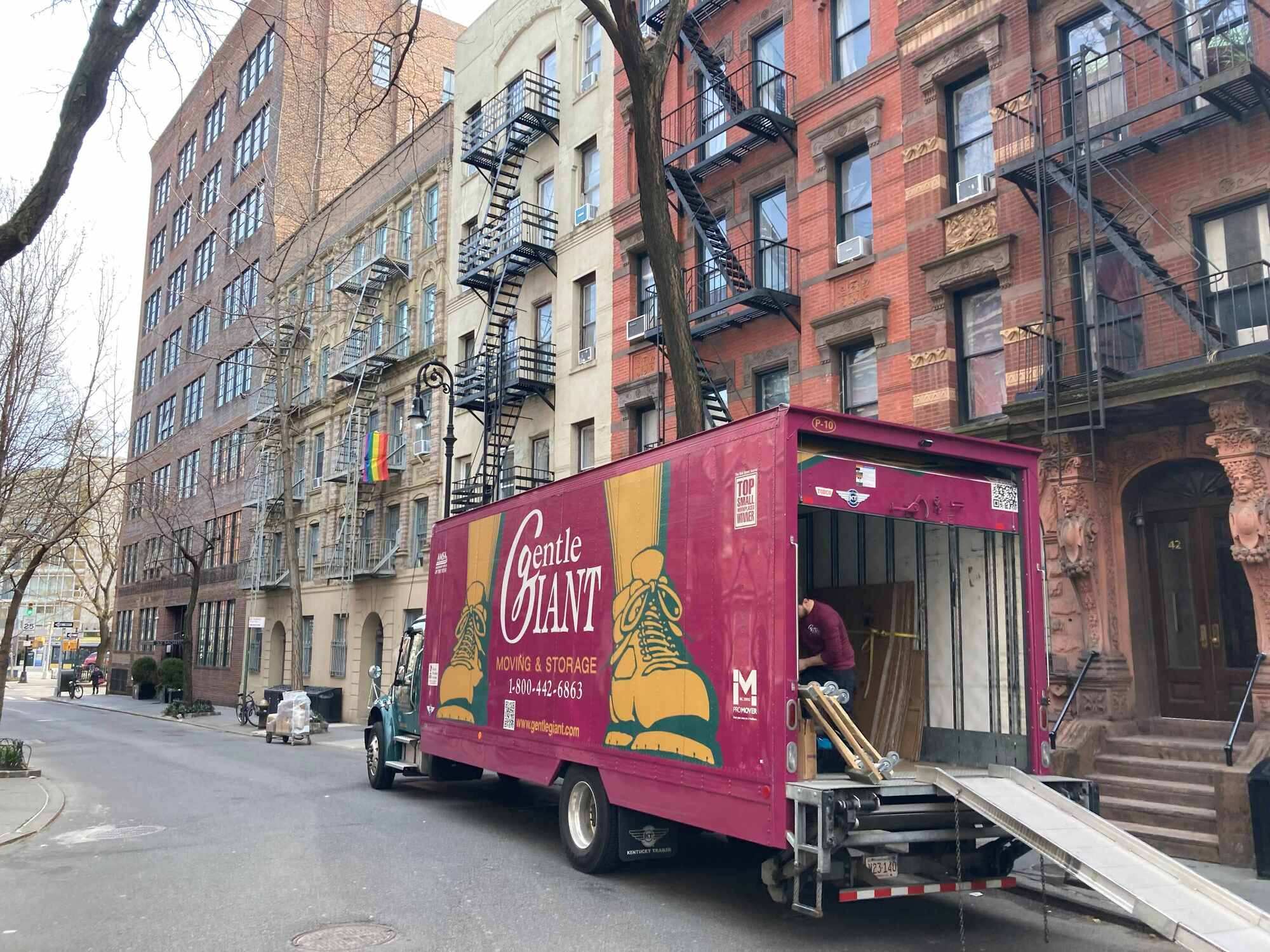 Coordinating move-in logistics includes planning for moving truck access and building entry procedures. Source: Gentle Giant Moving Company
Coordinating move-in logistics includes planning for moving truck access and building entry procedures. Source: Gentle Giant Moving Company
Elevator Reservation Policies
You’ll need to book the elevator for your move-in day if you’re heading to a multi-story building. Most properties require a 48-72 hour advance reservation to secure elevator access. Check if there’s a time limit for elevator use typically 2-4 hours and whether you’ll need to pay a deposit or fee. Some buildings maintain separate service elevators for moving while others temporarily pad their main elevators to prevent damage during moves.
Loading Dock Availability
Confirm whether your building has a designated loading dock for moving trucks. You’ll want to know the dock’s hours of operation maximum vehicle height clearance and any parking restrictions. Some properties require advance scheduling for dock access while others operate on a first-come first-served basis. Ask about the closest alternatives if there’s no loading dock such as temporary parking zones or designated unloading areas.
Moving Time Restrictions
Many buildings limit moving activities to specific hours typically between 9 AM and 5 PM on weekdays. You’ll need to verify whether weekend moves are permitted and if there are any blackout dates during high-traffic periods or holidays. Some properties charge extra fees for moves outside standard hours or require additional security staff presence. Make sure to factor these time restrictions into your moving company scheduling or DIY moving plans.
Understanding Community Rules
Every apartment complex has specific rules to ensure harmonious living among residents. Understanding and following these guidelines will help you avoid conflicts and maintain good relationships with your neighbors.
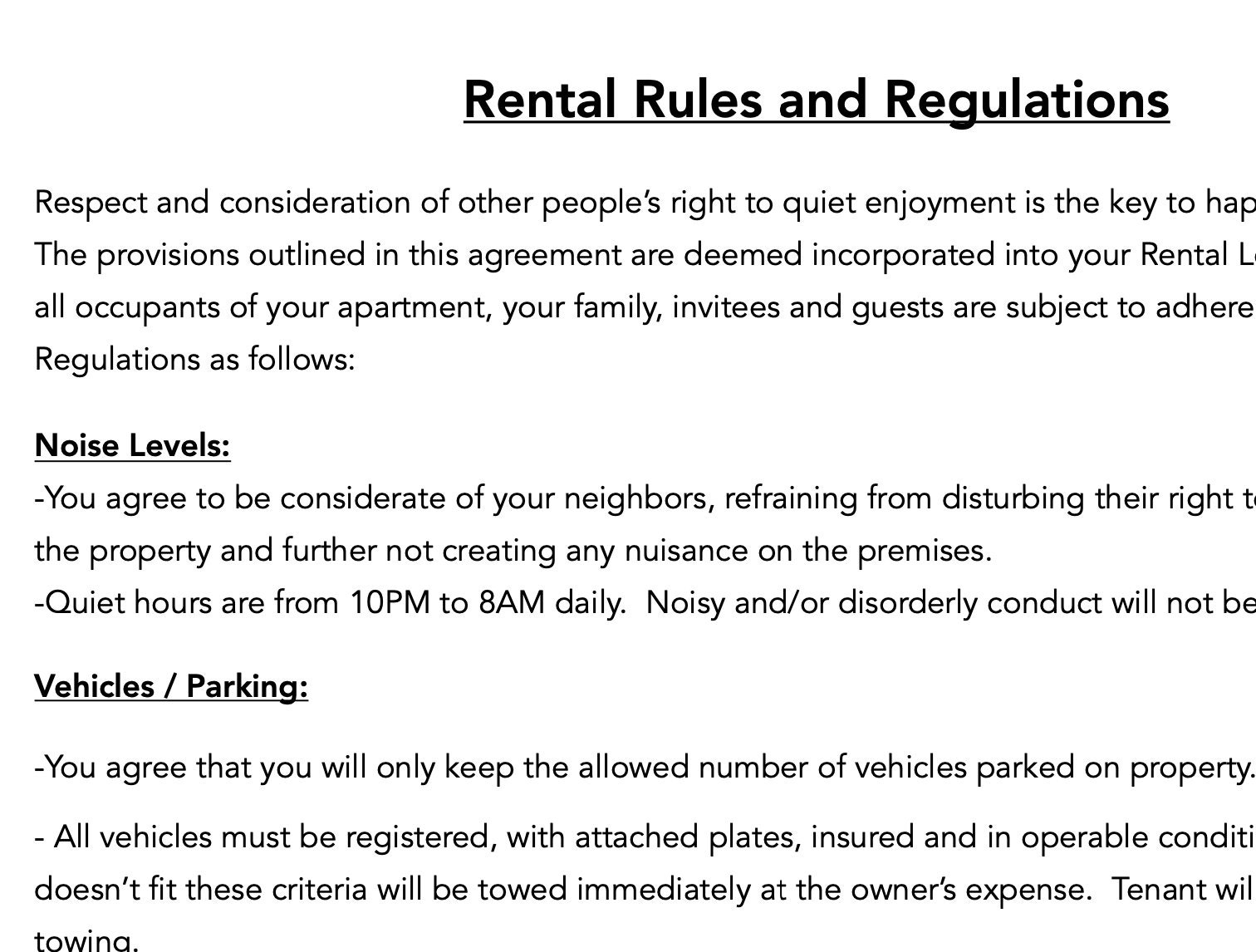 Clear community rules help maintain harmony among residents in apartment buildings by establishing expectations. Source: Etsy
Clear community rules help maintain harmony among residents in apartment buildings by establishing expectations. Source: Etsy
Quiet Hours and Noise Policies
You’ll need to know your building’s quiet hours to avoid noise complaints from neighbors. Most complexes enforce strict quiet hours from 10 PM to 8 AM on weekdays with slightly extended hours on weekends. During these times you must keep music TV & voices at a reasonable level.
Some buildings have specific rules about musical instruments laundry equipment & party hosting. Many communities use a “three-strike” system for noise violations which can lead to fines or even eviction. It’s smart to get familiar with sound-carrying patterns in your unit & consider using rugs or sound-dampening curtains to minimize noise transmission.
Common Area Usage Guidelines
You’ll want to review the rules for shared spaces like pools gyms & lounges before using them. Most communities require advance reservations for party rooms & have strict capacity limits for all amenity spaces.
Pay attention to posted hours of operation & any seasonal restrictions for outdoor facilities. Keep in mind that some areas may require a key fob or access card & guests might need to be accompanied by residents. Many buildings have specific cleaning requirements after using shared grills or community kitchens. Following these guidelines helps maintain these spaces for everyone’s enjoyment.
Guest Parking Regulations
You’ll need to understand the specific rules about visitor parking to avoid tickets or towing. Most complexes offer designated guest spots that require permits or have time limits usually 24-72 hours.
Some buildings use visitor passes that must be displayed on the dashboard while others require guests to register their vehicles with the front office. Be aware of any overnight parking restrictions & zones reserved for maintenance or emergency vehicles. Many communities limit the number of guest vehicles per unit & have special rules during peak periods or community events.
Evaluating Future Considerations
Planning ahead can save you from unexpected surprises and help you make informed decisions about your rental future.
Lease Renewal Options
Before signing your initial lease ask about renewal terms and processes. Most landlords require 60-90 days’ notice before your lease ends to confirm whether you’ll stay or move out. Request details about month-to-month options which offer more flexibility but often come with higher rates.
Some properties offer incentives for early renewal commitments like maintaining your current rent rate or small upgrades to your unit. Make sure to get any promised renewal terms in writing during your initial lease signing.
Rent Increase Policies
Understanding potential rent increases helps you plan your long-term budget. Ask about the typical annual rent increase percentage and when these changes take effect. Many properties cap yearly increases at 3-5% but this varies by location and market conditions.
Find out if your building follows rent control guidelines if applicable in your area. Request the exact notification timeline for rent changes which usually ranges from 30-60 days before renewal. Getting these details upfront helps you avoid sudden financial strain.
Move-Out Requirements
Know your move-out obligations well before your lease ends. Most properties require a deep clean professional carpet cleaning and wall repairs for nail holes. You’ll need to submit a formal notice to vacate typically 30-60 days before moving.
Ask about the security deposit return timeline and specific requirements for getting your full deposit back. Request a move-out inspection checklist so you can prepare accordingly. Remember to document the unit’s final condition with photos and get written confirmation of your move-out inspection.
Making Your Final Decision
Take stock of your research before signing the lease. Review your notes photos and inspection findings to identify any red flags. Trust your gut feeling – if something doesn’t feel right about the apartment or management it’s better to keep looking than commit to a less-than-ideal situation. Compare your must-have list against what this apartment offers to ensure it meets your core needs.